Excerpts from Jim Conrad's
Naturalist Newsletter
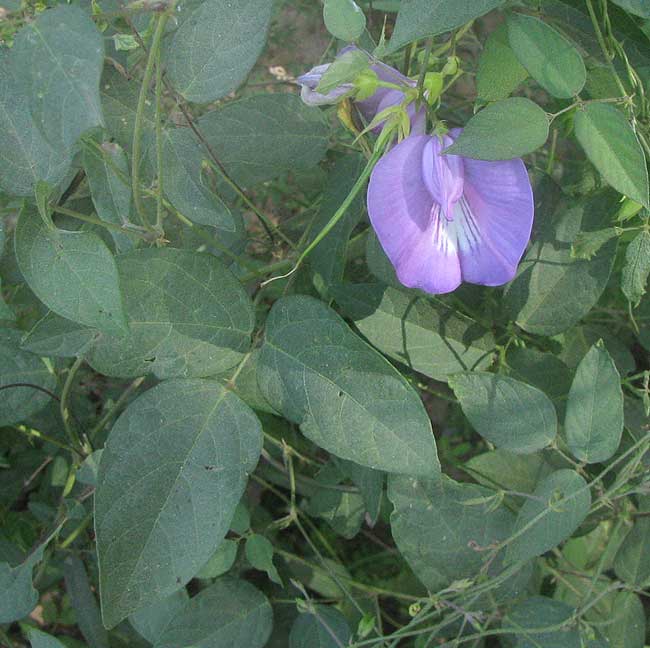
from the the July 8, 2012 Newsletter issued from the woods of the Loess Hill Region a few miles east of Natchez, Mississippi, USA
BUTTERFLY PEA
For over a month a Bean Family vine has been gracing our roadsides and woods edges with conspicuous, 1-1/3-inch long (35mm), blue-and-white flowers and trifoliate leaves similar to those on garden bean vines, as shown above. A close-up of the blossom, a little unusual for the Bean Family, is shown below:
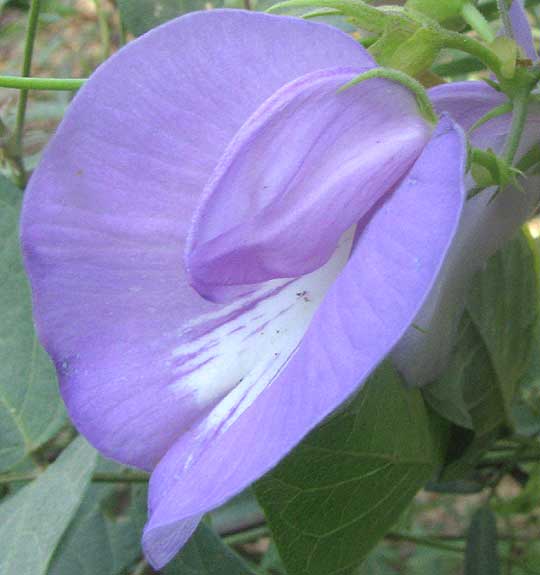
If you're familiar with Bean-Family "papilionaceous" flowers (diagrammed on our Bean-Flower page at http://www.backyardnature.net/fl_beans.htm), you'll wonder what that hooded structure is occupying the blossom's center. What's happening is that, relative to the vast majority of flowers of other Bean Family species, this flower presents itself upside-down. The hood is actually the "keel," which in most such blossoms consists of the flower's two lowermost petals fused at their edges to form a scoop-like structure. The broad "pollinator landing pad" occupying most of the picture in other flowers is the topmost petal, known as the "standard" or "banner." If you look closely you can also see the two side petals, the "wings," clasped against the keel. You can see what's happening inside the keel in a close-up where I've removed one side of the keel below:
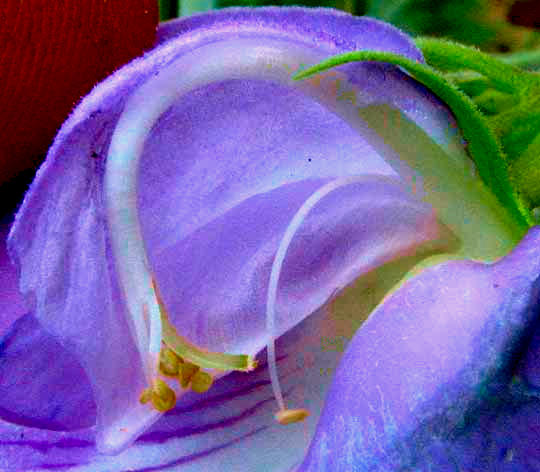
There you can see nine stamens grown into a tube at their bases, with one stamen held apart, a situation peculiar to the flowers of many Bean Family genera. Such stamens are said to be "diadelphous." Notice the white, fuzzy-stigma-tipped style curving from the stamen tube. All this makes sense when you see a pollinator entering the blossom, its weight and actions causing the stigma to thrust farther from the tube, to snag pollen off the pollinator.
The most common English name for this pretty and long-flowering vine is Spurred Butterfly Pea. It's CENTROSEMA VIRGINIANUM, native to the US Southeast, but extending as far north as New Jersey along the coast and Illinois inland.
A much more widely distributed Bean Family vine with very similar flowers, found in most of the eastern and central US, is easy to confuse with Spurred Butterfly Pea. It's the Atlantic Pigeonwings, Clitoria mariana. That species' sepals are short and arise from a distinct calyx tube. Our Spurred Butterfly Pea's calyx is very different, with long, slender sepals, is shown below:
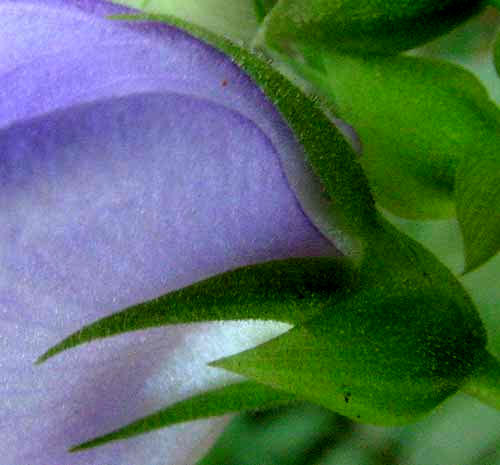
Spurred Butterfly Pea produces a long, slender legume, as shown below:
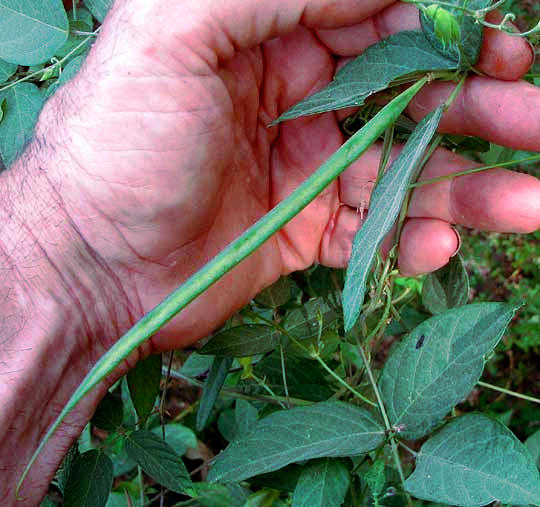
In that picture you can see that the beans will be too small, and the pod too stiff and woody, to provide much food value for humans when the revolution comes, though ground-feeding birds might relish them.
Seeing this Spurred Butterfly Pea gives me a special pleasure because back in the Yucatan along the road I jogged each morning leading to Hacienda Chichen, during the dry season another butterfly pea species adorned the roadside with similarly pretty flowers. You might enjoy comparing our US one with the Yucatan's -- getting that "variation-on-a-theme buzz -- at http://www.backyardnature.net/yucatan/butt-pea.htm.